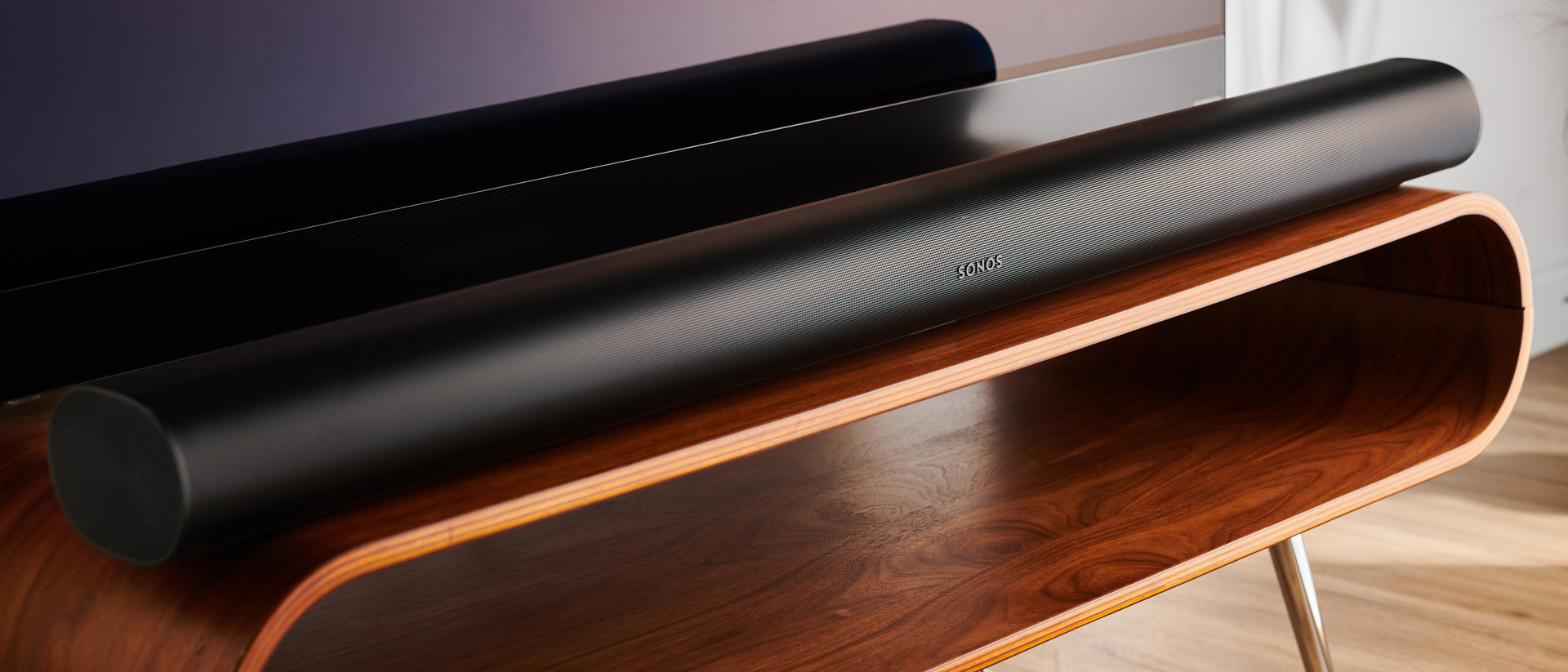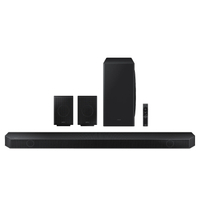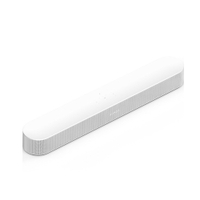TechRadar Verdict
The Sonos Arc is an impressive and premium Dolby Atmos experience even without a subwoofer or extra speakers. New soundbars offer even better positional sound effects, but when it comes to dynamic audio that's perfectly clear from a single-box package, it's as good as you can get for the price. And, being Sonos, it's excellent with music as well as movies.
Pros
- +
Dynamic and powerful sound
- +
Discrete all-in-one soundbar
- +
Superb with music or movies
Cons
- -
No DTS/DTS:X support
- -
No HDMI passthrough
- -
Trueplay Tuning is iOS only
Why you can trust TechRadar
Editor's note
• Original review date: June 2020
• Current flagship Sonos Dolby Atmos soundbar
• Launch price: $799 / £799 / AU$1,399
• Target price now: From $830 / £799 / AU$1,265
The Sonos Arc has long reigned as the flagship Dolby Atmos soundbar from Sonos, and its price was actually hiked to $899 / £899 / AU$1,499 from its initial $799 / £799 / AU$1,399 price at launch. Sonos clearly feels confident about its top soundbar, which delivers high-impact 5.0.2-channel Dolby Atmos sound, though it has gained plenty of flagship soundbar competition in recent years that provide a higher channel count and features like multiple HDMI ports. Prices for the Sonos Arc have since started to drop, with $830 / £799 / AU$1,265 being a more typical cost, and even less during sales events like Black Friday. Such deals make the Arc a better value, especially if you’re a Sonos fan. The rest of this review remains as previously published.

One-minute review
The Sonos Arc is the company's biggest and beefiest soundbar even now, a few years on from its release. While we’re not sure if the device gets its name from the HDMI interface it uses, the curved sound it pitches or the fact that it is perhaps, metaphorically, a vessel delivering impressive surround sound to the modern minimalist home – but whichever the case, this bar is built to deliver big sound without taking over the room.
The Sonos Arc can deliver the best quality Dolby lossless audio found on cutting edge Blu-ray disks, and can provide the 3D soundscape of Dolby Atmos object tracks from discs and streaming movies. This means that it can bounce certain sounds off the walls around you so they feel like they’re coming at you from all angles. Interestingly, this is what the Sonos Era 100 & 300 are rumored to do – the upcoming Sonos speakers that could blow the competition out of the water.
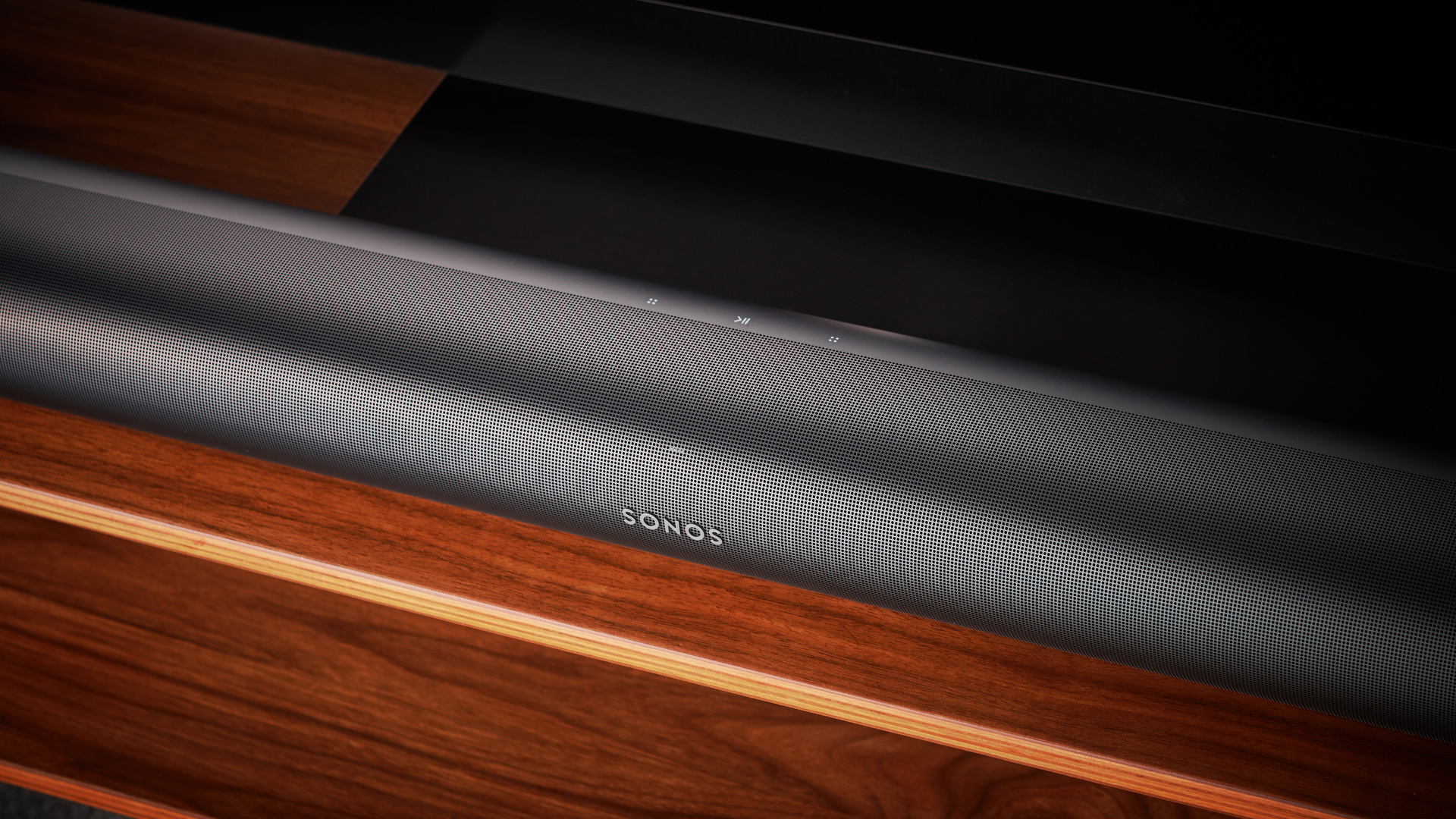
While all this might sound complicated, the Sonos Arc setup couldn’t be simpler, involving just a couple of steps on the smartphone app. The minimalist cable connections and all-in-one system construction add to this no-fuss feeling and streamlined aesthetic. If you’ve got a media room with four walls and a roof then this is absolutely one of the best soundbars around.
There are some caveats for those with expansive TV rooms – or smaller rooms that might be able to get away with using the smaller and more affordable Sonos Beam (Gen 2) instead. It's also important to note that it only has one HDMI port – it doesn't have a 'passthrough' port, like most soundbars do these days, so you lose the use of the port it's connected to.
But all up, the Arc is a pretty amazing bit of kit that can mimic impressive 3D sound from a sleek and self-contained unit, making it the best Dolby Atmos soundbar around if you want one without a separate subwoofer or speakers. Though being Sonos, you could add those later, of course…
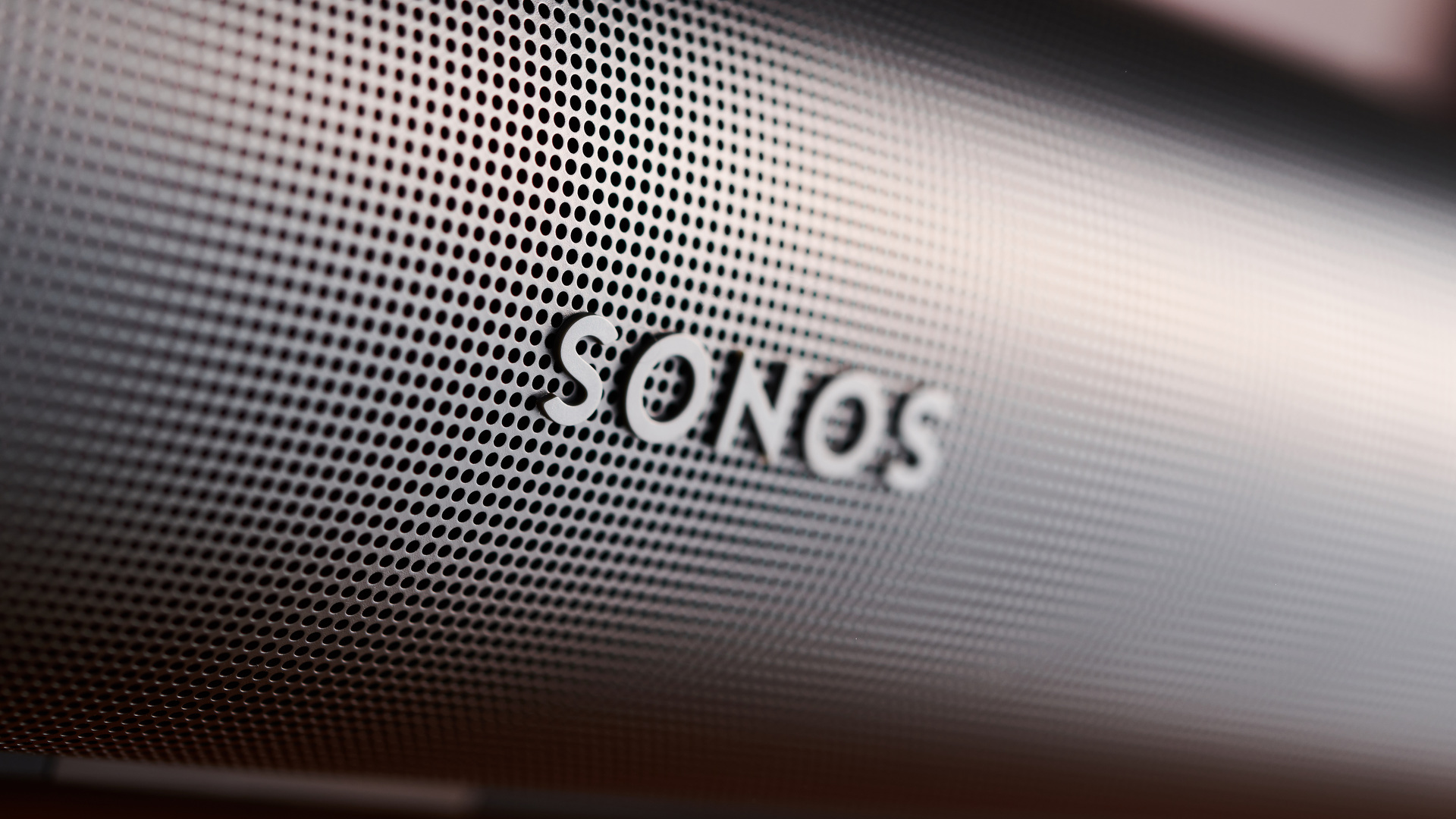
Sonos Arc: price and availability
- Released in June 2020
- Official price: $899 / £899 / AU$1,499
The Sonos Arc soundbar launched globally on June 10, 2020 and cost $799 / £799 / AU$1,399 as a standalone unit. However, after Sonos announced a nearly product-wide price hike, it now costs $899 / £899 / AU$1,499.
While this Atmos-enabled speaker is perfectly capable on its own, you can also add the Sonos Sub (Gen 3) for $749 / £749 / AU$1099 for huge bass upgrage, or a Sonos Sub Mini ($429 / £429 / AU$699) for a smaller bass boost. You can also add a pair of Sonos One SL units for rear left and right surround sound, which will set you back $199 / £179 / AU$289 each. These speakers have also increased in price since their launch.
The Arc has been designed to sit on the tabletop beneath your TV, but you can also mount it below a screen using the Sonos Arc compatible wall mount ($79 / £79 / AU$99).
A lot has happened in soundbar world since the Sonos Arc's release, and it's price looks a little on the high side if you just want big home theater sound. You can get something like the Samsung HW-Q930B, with sub and rear speakers included, for around the same price as the Sonos Arc alone. However, not everyone wants all those boxes, even when they're wireless, and when it comes to all-in-one soundbars, the Arc is good value compared to competition such as the Sony HT-A7000.

Sonos Arc: design and features
- Width of a 55-inch TV
- Simple setup
- Taller than most soundbars
There was a time where you wouldn’t consider anything other than a multi speaker array for the best quality surround sound, but Dolby Atmos is leading the charge to deliver 3D audio effects from a more streamlined system – and the Sonos Arc is a great example of this.
The self contained single unit has only two essential inputs: a power cable and a HDMI in, and while an Ethernet socket and a Digital Optical to HDMI adapter are available out of the box, it’s only recommended you use them if you absolutely have to. Sonos doesn’t even include a remote, suggesting you instead connect the soundbar to your TV via the Audio Return Channel (ARC) and just use your TV remote (or control it through the new Sonos S2 smartphone app).
Speakers: 5.0.2, 11 Class-D amplifiers, 8 woofers, 3 tweeters Dimensions: 45 x 3.4 x 4.5 inches (1141.7 x 87 x 115.7mm), 13.78 lbs (6.25 kg )
Finish: Matte Black or White
Connections: HDMI input (ARC), optical digital audio to HDMI converter, Bluetooth, Ethernet port, 802.11b,g Wi-Fi, Apple AirPlay 2, IR receiver
App: Android (no Trueplay), iOS
Subwoofer included: No
Even the color choices are simple with the Arc, being available in just back or white. And while you can of course pair the Sonos Arc soundbar with the Sonos Sub or a pair of One SL speakers for deeper bass and true surround sound, it’s been created to be an excellent audio solution on its own, which cuts down on overall clutter.
Since the Arc is intended to bounce audio off the roof and walls of your room to create a 3D soundscape, it’s wrapped on the top, front, and either end by metal, hole-punch speaker grilles that cover the various orientations of the Atmos driver array.
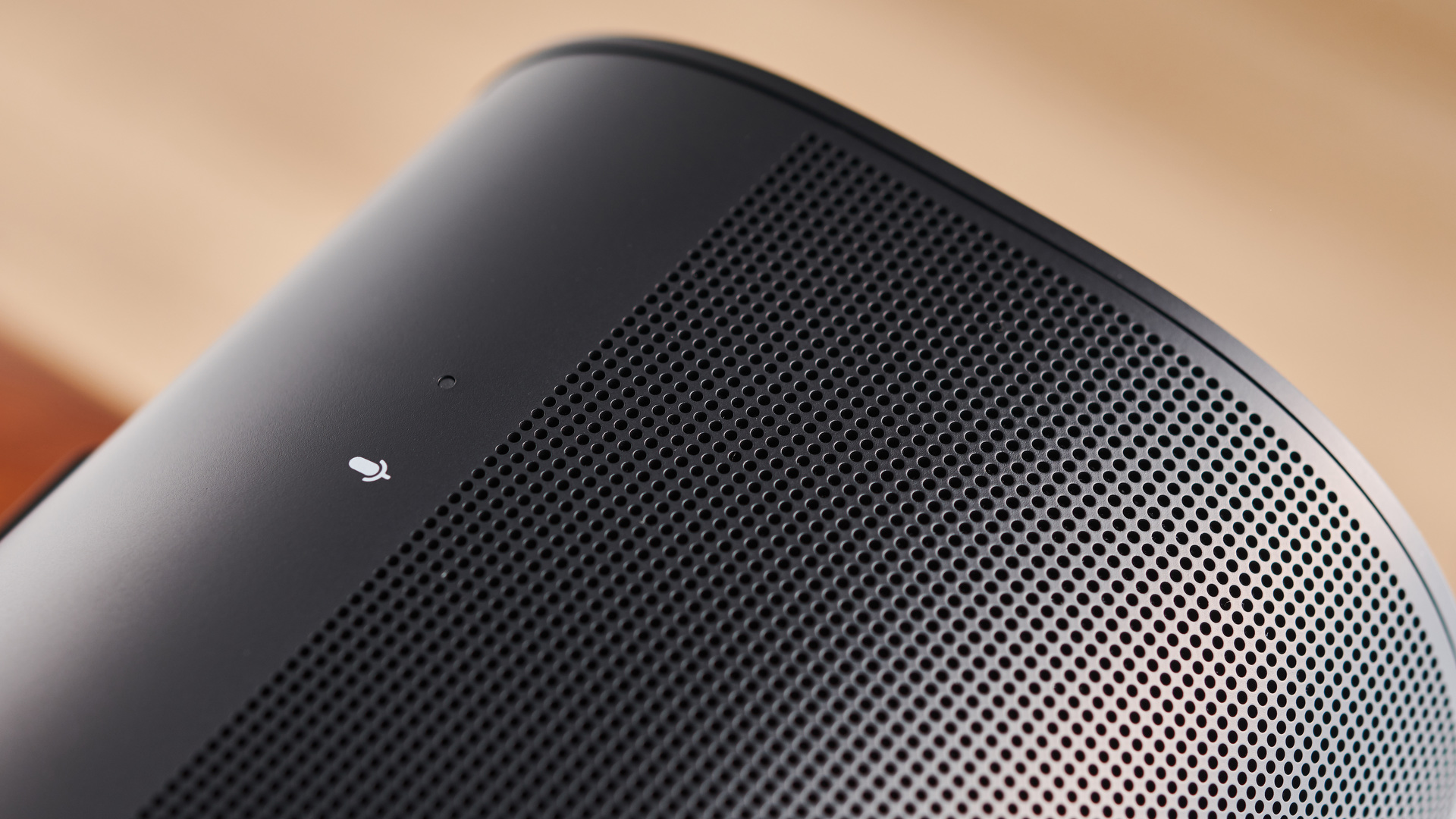
The soundbar sits a little higher than most at 3.4-inches (8.7cm), and this can be a problem with TVs that sit very low on their stands. But the built in IR repeater means it won’t block your remote connection, and this extra headroom gives a little more space to the upward firing Atmos drivers. At 45-inches (114.17cm) wide it’ll line up roughly with the edges of the average 55-inch TV, and its scale makes it suitable for anything up to 85 inches.
There is a simple status LED light that self-adjusts brightness according to ambient light and the subtle capacitive play/pause, volume and mute buttons help it blend into the background.
There’s two rear reinforced holes to wall mount the 13.78 lb (6.25 kg) unit for a forward facing mounting setup, but naturally the bass response is a little more concentrated when it can reflect off a tabletop surface.
While there is a Digital Optical converter included with the Arc, Atmos can only be carried over HDMI so by connecting it you’ll be sacrificing top quality sound. Dolby Atmos still isn't ubiquitous in terms of availability so making sure you have all the right bits can be a bit of a process. To see if your other current components are Atmos-ready check out our Dolby Atmos explainer.
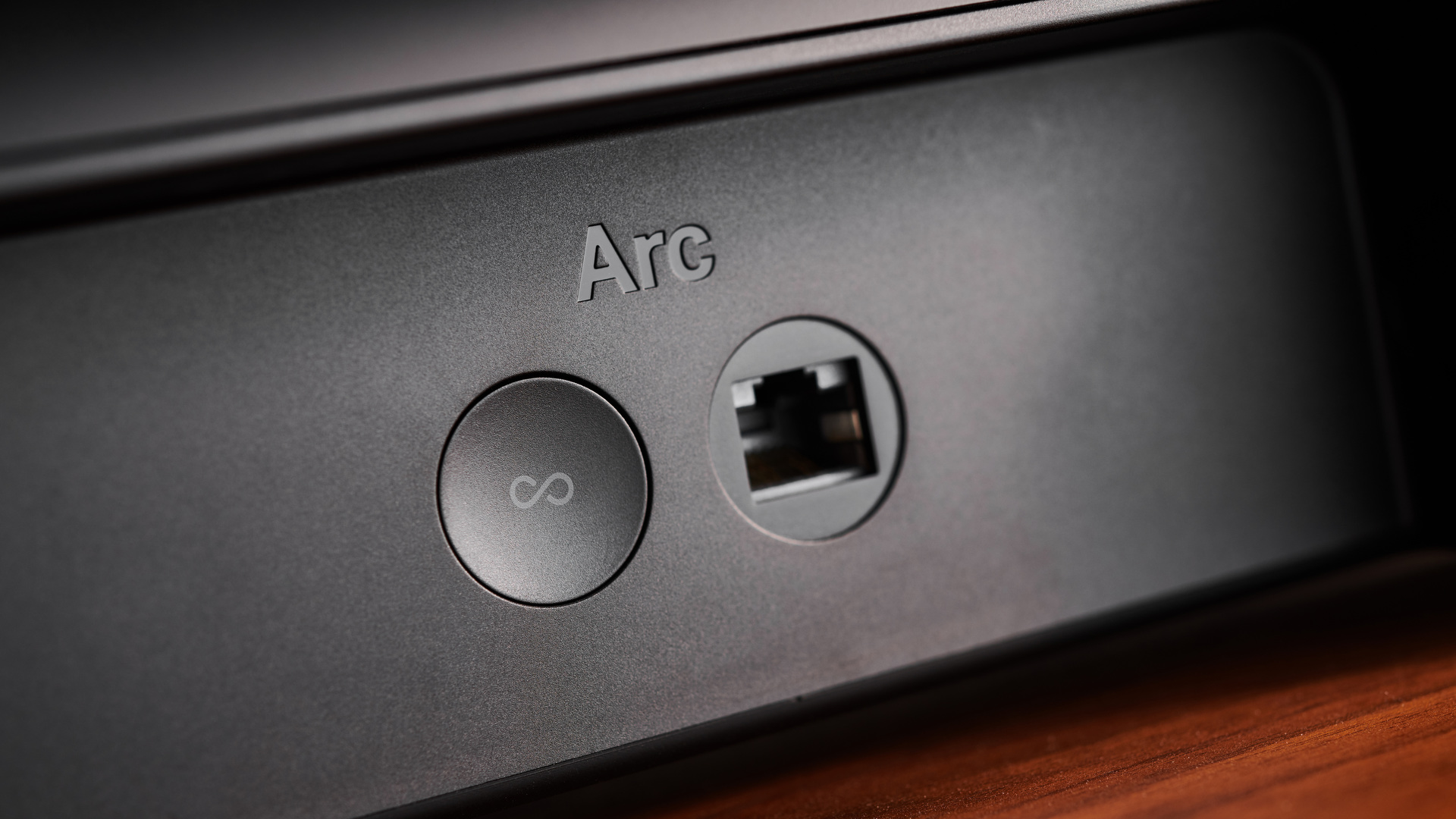
Much like everything else with the Arc, the setup process is designed to be as simple as possible, all done through the new Sonos S2 smartphone app. After the initial plug in, you’re asked to download the app from the App store or Google Play Store (if you don’t already have it).
Then, you'll need to follow a couple of prompts to connect the TV to Wi-Fi, any audio streaming or internet radio services you may already be signed up to, and your choice of Amazon Alexa or Google Assistant. Other than this there’s not much else to the setup, it’s a relatively painless process (especially if you already have a Sonos account).
There is one last task you’ll want to perform before firing up your favorite movies, however: Trueplay Tuning. Trueplay is Sonos’ tool that analyzes the shape of a room in order to best balance the sound output. It can detect how the sound reflects, and tweak its audio to make everything sound as good as possible.
It makes a marked difference to detail overall, and to the clarity and precision of Dolby Atmos positional effects.

There is one pretty considerable hitch, however: Trueplay is only compatible with iOS devices. This is a big inconvenience for non-Apple users and Sonos says that the diversity in Android hardware means it isn’t planning on developing it anytime soon.
Fortunately, you can borrow an iOS device to run the calibration in the soundbar’s final location and it’ll remain true as long as you keep things in vaguely the same place. It’s an inconvenience, but on balance it’s probably simpler than having to store a dedicated tuning microphone somewhere memorable after setup.
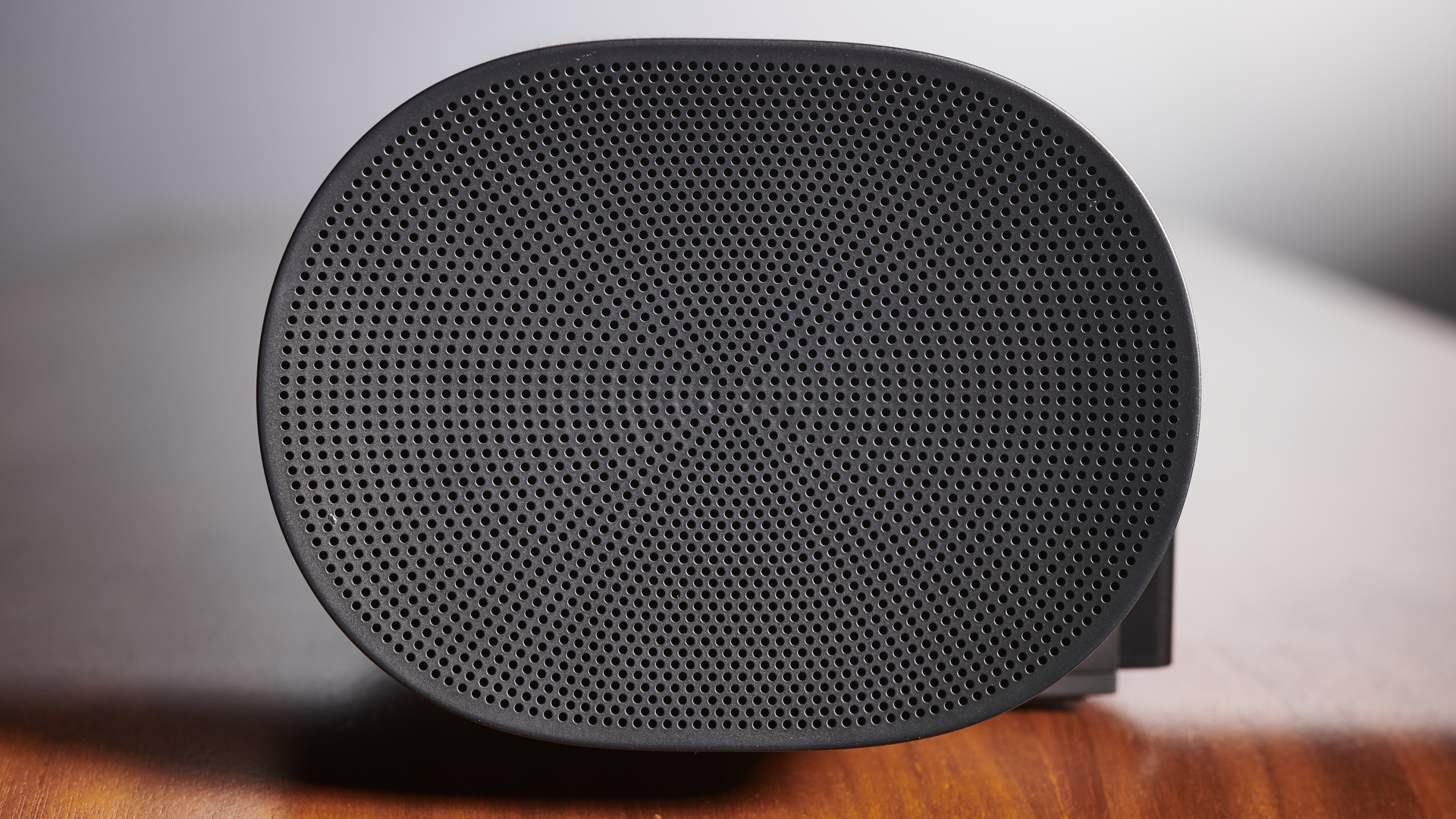
Sonos Arc: audio performance
- Excellent for both music and movies
- Great surround sound for a single bar
- Best with the right-shaped room
The Sonos Arc’s audio capabilities are seriously great. Eight elliptical woofers combine to deliver a solid overall bass response and the tuning balances a nice amount of warmth through the mids with an impressive level of clarity.
This precision is matched by the three silk dome tweeters that deliver particularly crisp highs with an impressive level of control. We were particularly taken by the unit's ability to deliver soundscapes that distinguished sound from individual instruments during particular arrangements without feeling disjointed.
This type of spatial precision makes sense when you consider that the Sonos Arc was designed to make the most of Dolby Atmos, an audio codec which separates sounds into object based audio tracks, so particular sources can be quickly shifted between speakers and bounced around the room more easily. So unsurprisingly, the Arc is very capable once you’ve tuned it to the room and it’s able to bounce effects around you.
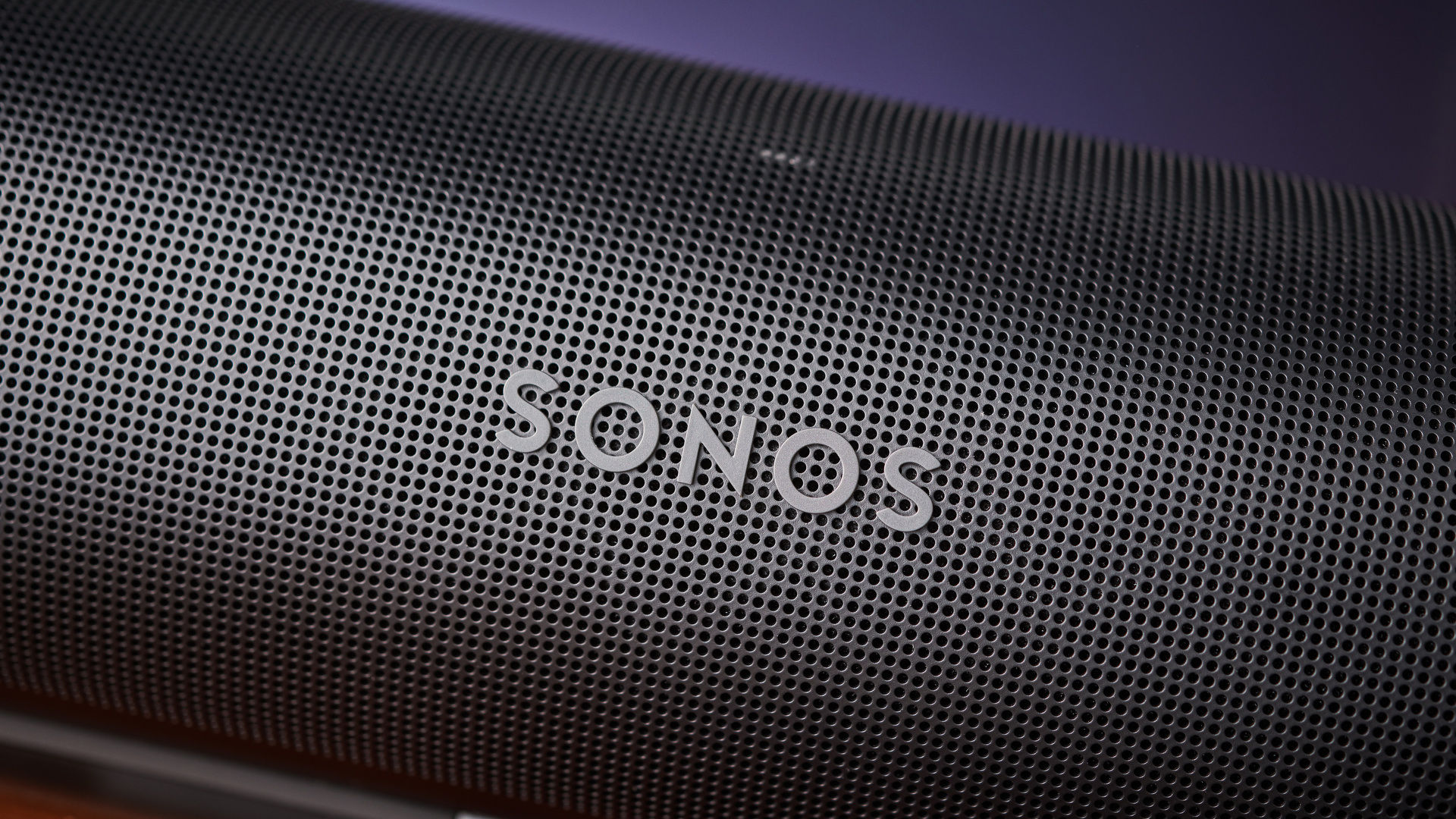
It’s worth pointing out that because the system uses your room to actually get the sound around you there’s going to be some variation in the Arc’s ability to deliver surround sound.
We tested it in a room with a 20 foot (6 meter) vaulted ceiling and a nib wall behind the sofa, which makes it essentially impossible to bounce audio around behind you.
So while we were able to experience excellent height and left/right soundscape movement, we definitely didn’t get the same surround sound experience as a multi-speaker array.
That said, the speaker’s audio positioning was good enough that in a boxier media room we’d expect you’d be able to get surprisingly close to multi-speaker surround sound using just the Arc soundbar.
We really didn’t feel any desperate need to add a Sub to the Arc soundbar, there was more than enough powerful bass to allow you to feel those on-screen explosions or beat drops when turned up loud. We even felt the night mode settings that lower the bass EQ would be a useful feature for those in apartments with thin walls.
However, we have tested the Sonos Sub Mini with all three Sonos soundbars, and it does add extra power to the mix, no question – it's just not essential.
Should I buy the Sonos Arc?
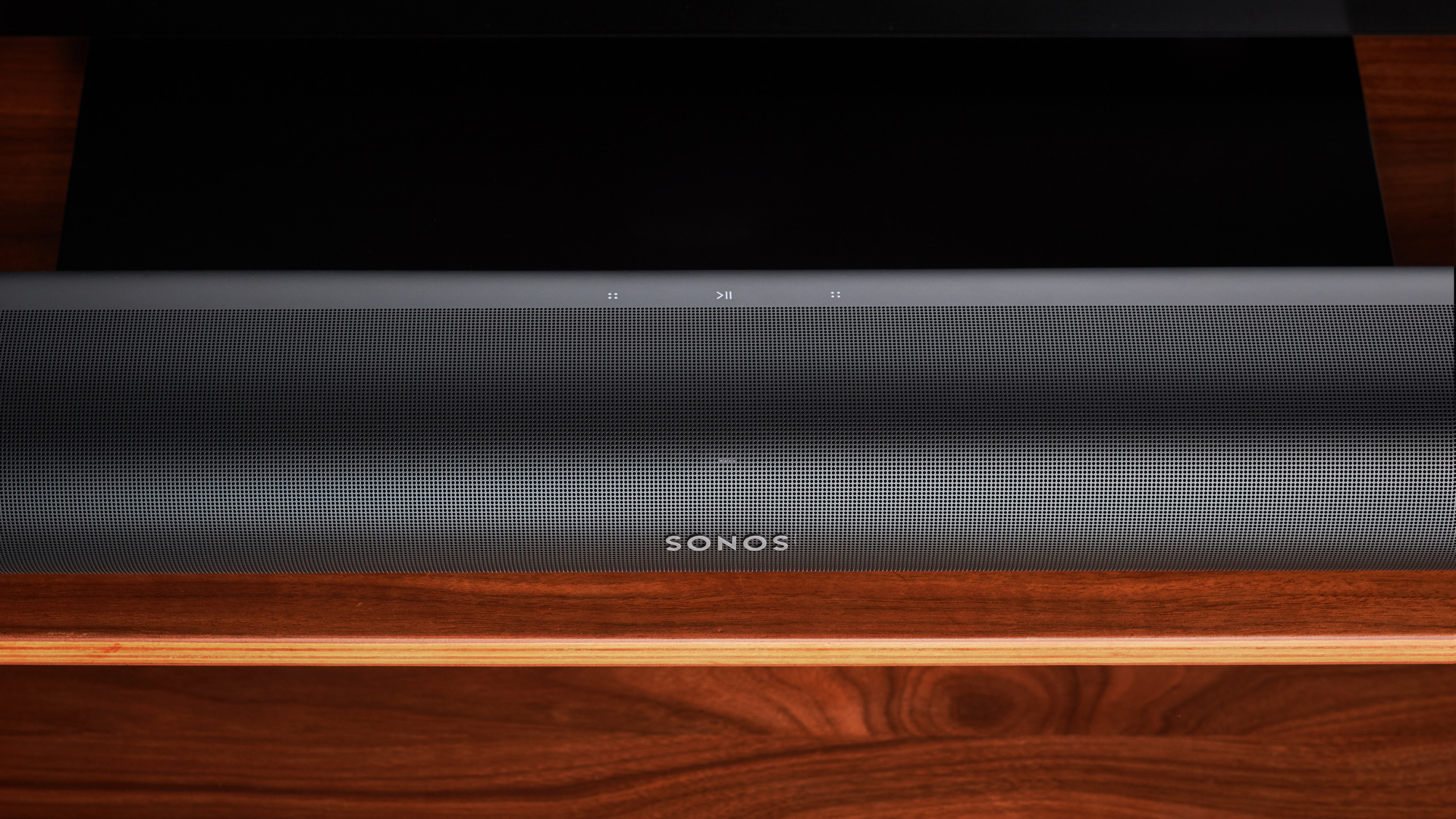
Buy the Arc if ...
You want Dolby Atmos sound
The Sonos Arc is one of the best speakers we’ve heard for audio separation, making it great for enhancing your surround sound experience.
You want the simplest surround sound system possible
The Arc is the best sub-less soundbar we’ve heard, so if you just want your TV and a soundbar connected with the bare minimum of cords and clutter, it’s an excellent choice.
You’re already a part of the Sonos multi-room speaker ecosystem
For anyone with a Sonos speaker at home (or those planning on investing in one) the speakers work well to create easy to use multi-room audio.
Don't buy it if...
You don’t have access to an iOS device for Trueplay Tuning
Trueplay is critical for getting good 3D sound on the Arc. While you can achieve Atmos sound without it, you may want to borrow a friend's iOS device to get the best from the Sonos Arc.
Your room isn’t right
Because the Arc relies on your room to achieve surround sound, if the couch is in the middle of a big expansive room and you don’t intend to buy One SL rear speakers you won’t get good surround sound.
Also consider
Not convinced by our Sonos Arc review? We've picked three other soundbars you may want to consider below:
Samsung HW-Q930B
For around the same price as the Arc, you get a four-box system, with rear speakers and subwoofer included. It's not as rich with music, but with movies it's hard to fault, and its Dolby Atmos positioning is fantastic.
Sonos Beam (2nd Gen)
If the Arc is too pricey (or large), Sonos' smaller soundbar also packs an incredibly detailed punch from a single box. The Dolby Atmos effects are nowhere near as impressive, but the overall sound balance and scale feel like they come from something much bigger. And you could add real rear surround speakers all for the total price of the Arc alone.
Sony HT-A9 Home Theater System
The Sony HT-A9 set of speakers is perfectly placed for someone looking for a better Dolby Atmos sound solution than a soundbar, but who isn't quite ready to invest in a full-fledged home theater system.
- First reviewed: June, 2020
- How we test: read TechRadar's reviews guarantee
- Find the best deals on Sonos products with our Sonos promo codes.

Joel Burgess is one of the Senior Writers on the TechRadar Australia team with over 9 years experience testing and reviewing laptops, gadgets and kitchen accessories from coffee machines to pizza ovens. Joel is the Australian PC Awards expert panellist for systems and laptops and is a permanent columnist and reviewer for Australia's leading PC magazine APC.
- Matt BoltonManaging Editor, Entertainment
